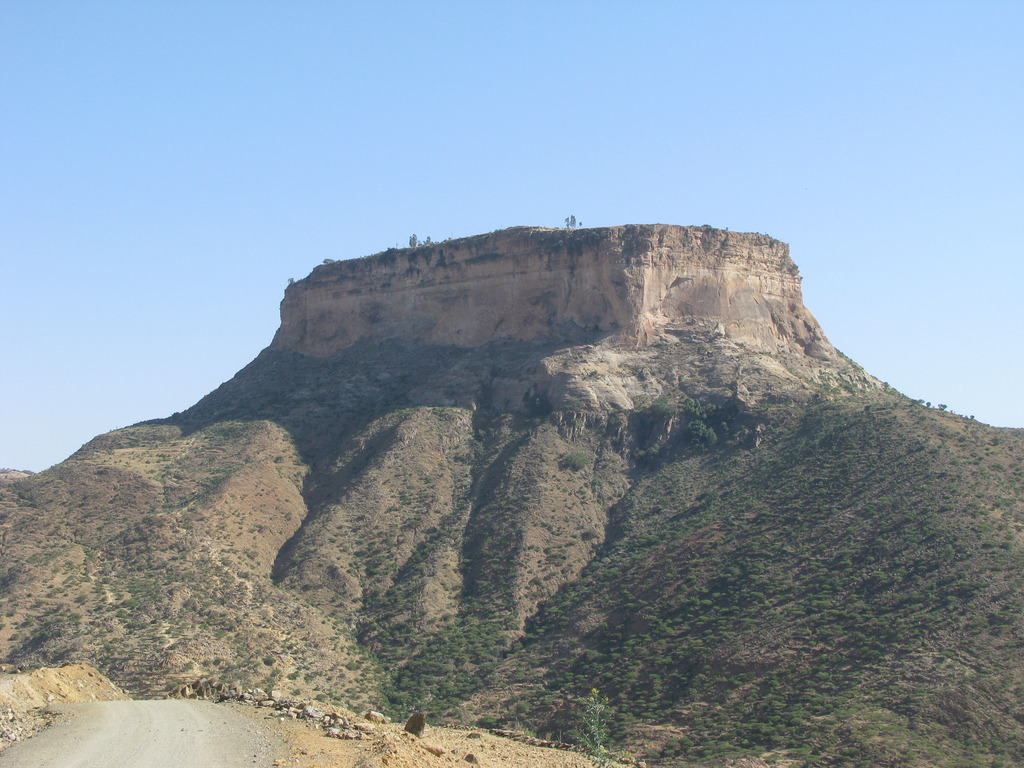
PHOTO: The Churches of Lalibela were carved out of solid rock. (Photo by David Cogswell)
Ethiopia is emerging from the shadowy sidelines of the world community and joining the global travel industry, bringing its attractions to market. The richness of the country’s historical sites will surprise most people who have never visited the country before. Besides its fertile sub-saharan landscape and natural wonders, the East African country has a wealth of historical sites, and many major religious sites.
NTA (National Tour Association) recently conducted a Product Development Trip to Ethiopia, sponsored by the Ethiopian government, to introduce American tour operators to the country’s tourism possibilities.
The NTA PDT Ethiopia took a small group of tour operators and some travel reporters for a quick overview tour of Ethiopia. The itinerary was designed to pack as much of Ethiopia’s most compelling attractions into the time allowed as possible. In 10 days, there was only time for a rough survey of all that Ethiopia has to offer travelers.
In an attempt to compile an authoritative listing of the top religious sites in Ethiopia, TravelPulse went to one of the foremost authors of religious travel guidebooks in the world today, Kevin Wright.
Besides being an authority on world religious travel, Wright is director of growth markets at NTA (National Tour Association), where he leads corporate entrepreneurial development of niche travel markets based on special interests such as faith, family, adventure, agritourism, sports and cuisine.
In his capacity with NTA, Wright was recently part of a team that put together the NTA Product Development Trip to Ethiopia.
Before joining NTA, Wright was the founder and director of the World Religious Travel Association (WRTA). Before that he directed the faith-based travel marketing for Globus. He serves as consultant to the Faith Travel Association (FTA) and as industry board member for the International Journal of Religious Tourism and Pilgrimage.
Wright is the author of four religious travel guidebooks, including Catholic Shrines of Western Europe, Catholic Shrines of Central and Eastern Europe, Europe’s Monastery and Convent Guesthouses and The Christian Travel Planner.
Travel Pulse asked Wright for his estimation of the top religious sites in Ethiopia. Here’s his list, along with some of his explanatory comments.
Church of St. Mary of Zion in Axum.

According to Wright, this site is considered “the most prominent pilgrimage site in Ethiopia.” It is claimed to house the original Ark of the Covenant, that is, the chest containing the stones upon which the Ten Commandments were written.
The Rock-Hewn Churches of Lalibela.

Sometimes referred to as the Eighth Wonder of the World and the spiritual home of Ethiopia, the site houses 11 churches that were not built from the ground up stone by stone, but were carved into solid rock. Comparable to the elaborate carvings at Petra in Jordan, the rock-hewn churches are a wonder in their very existence.
Harar.

Located in the Ethiopian Highlands, Harar is known as the City of Saints and is regarded by many as the fourth holiest city of Islam, following Mecca, Medina and Jerusalem. It is the home of 82 mosques, three of which date from the 10th century and 102 shrines.
Debre Birhan Selasse Church.

This church is known for its colorful and detailed paintings of biblical scenes. The church’s ceiling is the highlight and focal point for visitors.
The Bahir Dar Monasteries.

Along Lake Tana, the largest lake in Ethiopia, is a group of some 20 monasteries, including the most famous, Ura Kidane Mehret. Still functioning monasteries and churches house elaborate wall paintings from hundreds of years ago.
Tigray.

Like Lalibela, Tigray has rock-hewn churches, more than 100 of them built on high perches with amazing views of the landscapes below.
The Timkat Festival.

One of many in a festival-rich country, the Timkat Festival celebrates and re-enacts the baptism of Jesus. The festival takes place in Gondar, and serves as the most important holiday and pilgrimage event for Ethiopian Orthodox Christians.
The Meskel Festival.

Held in Addis Ababa as well as in Gondar and other cities, the Meskel commemorates the finding by Empress Helena of Constantinople of what was believed to be the actual cross upon which Jesus was crucified. The occasion has been celebrated by Ethiopians for more than 1,600 years.
Sheikh Hussein.

In southeastern Ethiopia, the town and shrine of Sheikh Hussein is named after the 13th-century Sufi Muslim who introduced Islam to the region.
The Monastery of Debre Libanos.

Founded in the13th-century, the Debre Libanos Monastery has played a key role throughout the history of the Ethiopian Orthodox Church while also serving as a prominent place of pilgrimage.
